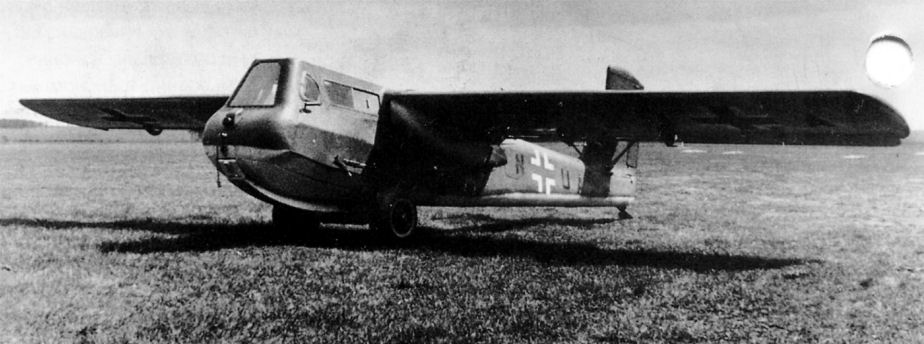Blohm & Voss BV 40
The Blohm & Voss BV 40 interceptor glider was conceived by Dr Richard Vogt, chief designer and technical director of Blohm & Voss as a low-cost emergency solution to the problem of the Allied bomber formations. It was to be towed by a Messerschmitt Bf 109 to operational altitude and released above the Allied bombers combat box. Once released, it would dive down at a sharp angle towards the enemy bomber fleet. During its short attack time, the BV 40 would fire its weapons, then glide back to earth.
By eliminating the engine and lying the pilot in a prone position, the cross-sectional area of the fuselage was much reduced, making the BV 40 harder for bomber gunners to hit. The pilot lay in prone in an armoured steel cockpit in the nose of the aircraft. The front steel plate was 20 millimetres (0.79 in) thick, and was fitted with a windscreen of 120-millimetre (4.7 in) thick, armoured glass[3] that gave the aircraft a blunt-nosed appearance.
Several prototypes were completed and flown, towed behind a Messerschmitt Bf 110. The first flight took place in May 1944. It was found the craft could reach 292 miles per hour (470 km/h) and it was thought to have the potential to go far faster. Various changes to the requirement and to the design were discussed, before the project was cancelled later in the year. In all, seven aircraft were completed and five of them flown.






